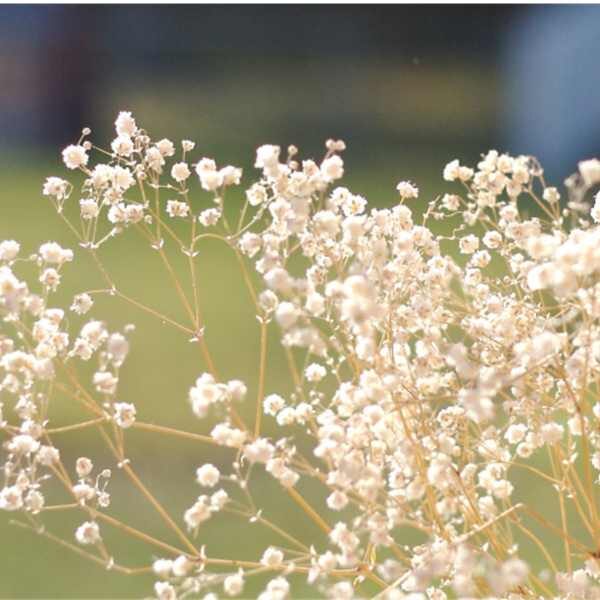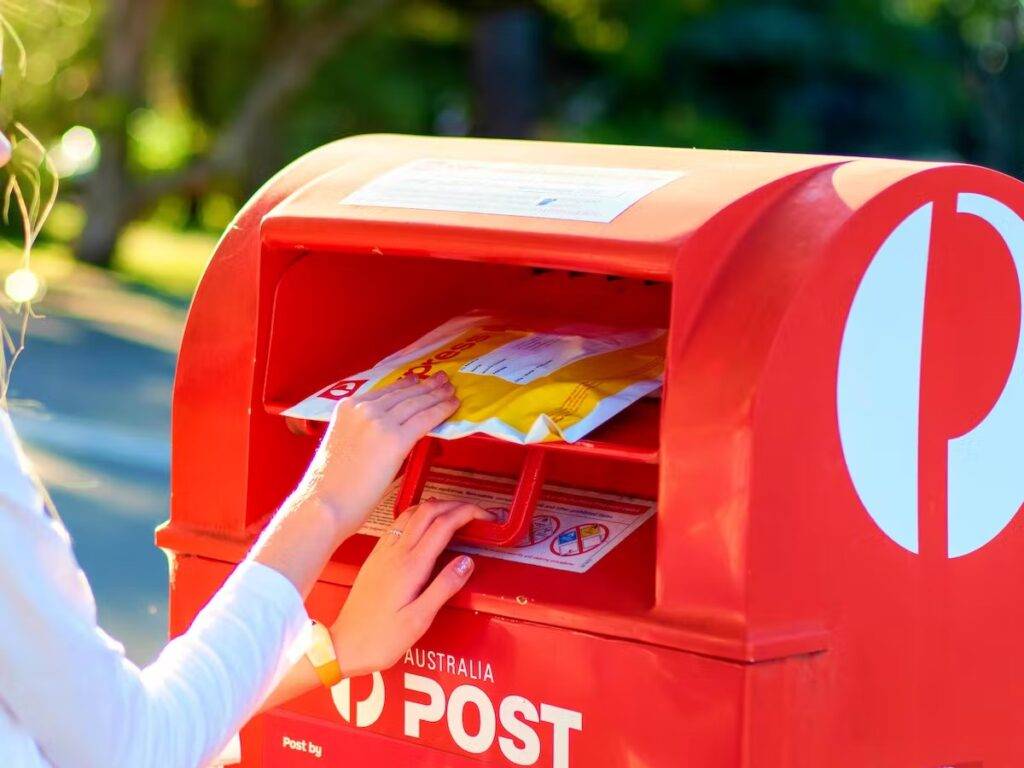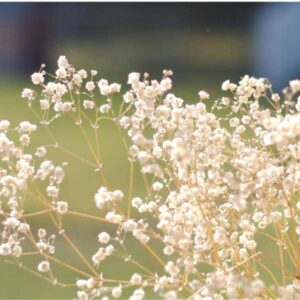Gypsophila Snowflake
$4.95
Gypsophilia Paniculata
- Seed Count 350
- Gorgeous Cut Flower
- Perennial
- Height 90 cm
In stock
Description
Gypsophila Snowflake, better known to many as Baby’s Breath, is a visual multitasker. In the garden, it forms decorative mounds of feathery blue-green foliage, reaching up to 90cm in height and spreading 60cm wide. But it’s the flowers that steal the show. From late spring through summer, the plant becomes dotted with countless tiny, pure white blooms that linger, creating a long-lasting display that seems to hover above the foliage like a delicate veil.
Pair it with bold, vivid blooms such as roses or dahlias and watch how it softens their intensity, and planted en masse, it transforms into a sea of white suiting cottage gardens, modern landscapes, and everything in between.
Once established, it’s remarkably resilient, tolerating both drought and poor soils and its compact, self-supporting habit means minimal fuss with no staking or constant pruning. It simply does its job, year after year, with a solid reliability.
And then there’s its secondary life as a cut flower. Gypsophila’s tiny blooms are the florists’ secret weapon, adding volume, texture, and a touch of romance to bouquets. The stems dry beautifully, too, retaining their shape and colour long after summer fades. For anyone who loves bringing the garden indoors, this plant is ideal.
| Method: Sow direct or seedlings | Soil Temp: 10°C - 25°C |
| Cool Mountain: Nov - Dec | Position: Full sun |
| Arid: Aug - Jan | Row Spacing: 25 cm apart |
| Temperate: Sep-Nov, Mar-Jun | Planting Depth: 3 mm |
| Sub Tropical: May - Oct | Harvest: 80 days |
| Tropical: Jun - Aug | Plant Height: 90cm |
Climate & Timing
Sowing Time:
- In frost prone areas, sow seeds in spring after the last frost (September–November).
- In frost free regions, autumn sowing (March–May) is also suitable for extended blooms.
Avoid extreme heat or cold, as these conditions hinder germination.
Soil Preparation
Soil Type:
- Gypsophila thrives in well drained, sandy, or gritty soil with a slightly alkaline pH (6.5–7.5).
- Avoid heavy clay soils.
Amendments:
- If soil is acidic, add garden lime to raise ph.
- Gypsophila prefers poor to moderately fertile soil so avoid over enriching with compost or manure.
Sowing Instructions
Direct Sowing:
- Scatter seeds 3 mm deep, spacing 25 cm apart, crowding promotes better blooms.
Germination:
- Seeds sprout in 7–14 days at 10 – 22°C.
- Keep soil moist but not waterlogged.
Containers:
- Use pots greater than 10L with quality potting mix.
- Ensure drainage holes to prevent root rot.
Care Tips
Watering:
- Water deeply but infrequently—allow soil to dry 10cm below the surface between watering.
- Avoid wetting foliage to prevent fungal issues.
Feeding:
- Avoid high nitrogen fertilisers.
- Apply a high potassium liquid feed (e.g., tomato fertiliser) during flowering for a boost.
Support:
- Tall varieties may need stakes or trellises.
- Install supports early to avoid root disturbance.
Harvesting
Cut Flowers:
- Harvest stems when half the flowers are open, ideally in the morning.
- Place in water immediately.
Drying:
- Cut stems when 50% of blooms are open.
- Hang upside down in a dark, ventilated area until papery.
Troubleshooting
Pests:
- Aphids, spider mites, and thrips can be managed with insecticidal soap or eco oil.
Diseases:
- Root rot from overwatering—ensure soil drainage.
- Gray mould (Botrytis) is treated by removing affected parts and improving airflow.
Companion Planting Guide
Best Companions
- Lavender: Repels pests (e.g., aphids) and shares Gypsophila’s love for full sun and dry soil.
- Marigolds: Deter nematodes and add vibrant colour contrast.
- Echinacea (Coneflower): Attracts pollinators and thrives in similar drought tolerant conditions.
- Salvia: Tall, upright growth complements Gypsophila’s airy texture.
- Coreopsis: Offers long lasting blooms and harmonizes with Gypsophila’s care needs.
Plants to Avoid
- Peonies: Compete aggressively for nutrients.
- Cabbage Family: Attracts pests like cabbage worms.
- Fennel: Releases growth inhibiting chemicals.
Seed Saving Guide
Harvesting Seeds
Timing:
- Let flowers fully mature and dry on the plant.
- Seeds are ready when pods turn brown and rattle.
Method:
- Place a paper bag over seed heads before cutting stems to catch fine seeds.
- Shake gently to separate seeds from debris.
Storage Tips
Viability:
- Gypsophila seeds remain viable for 2–4 years if stored properly.
Conditions:
- Store in an airtight container (e.g., glass jar) with a desiccant.
- Keep in a cool, dry place.
Postage Charge
Orders under $30 attract a $4.95 shipping charge. Orders $30 and above have free shipping.
Order Times
Seed orders are normally dispatched within three business days. You will receive an email when seeds are mailed out.
Postage Days
Seeds are mailed out Monday to Friday at 1pm. Except for the Friday of long weekends.
Postage Times
WA 2-3 Days: SA,NT 3-5 Days: NSW, ACT, QLD, VIC: 5-7 Days
Carrier
We use Australia Post Letter Postage for the majority of orders
Not only are our seeds packed in recycled paper envelopes, we keep the theme going when we post out website orders. To protect your seeds from moisture and the letter box munchers (snails), we use a very special plastic free material made from plants. They are then put into recycled mailing envelopes. Green all the way 💚🌿

















Well packaged. Can’t wait to plant them.